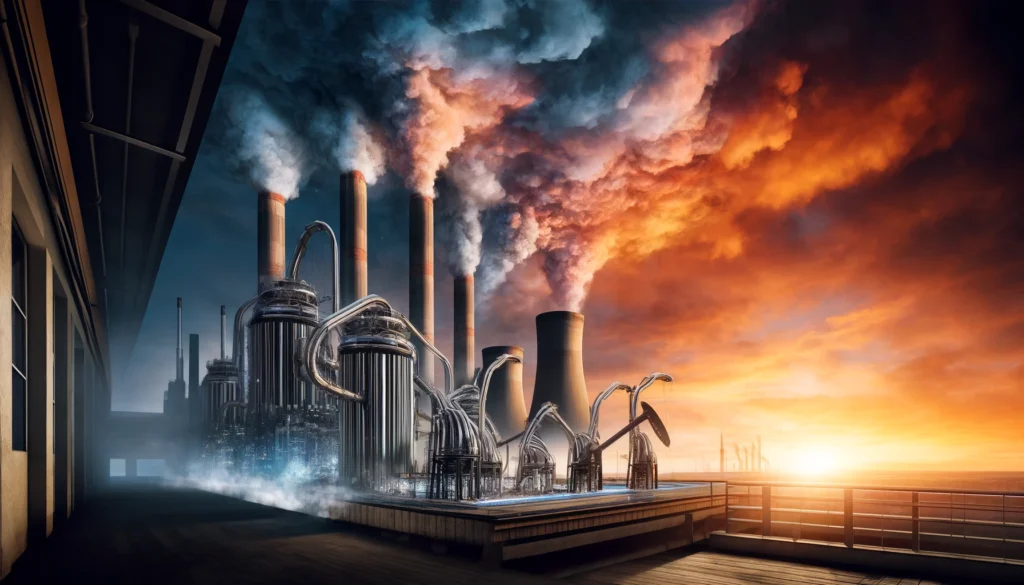“EPA regulation, coal plant emissions, carbon capture, clean energy transition, Biden climate goals, greenhouse gas reduction, environmental protection, carbon-neutral electricity, fossil fuel emissions, climate change policy”
“Discover the implications of the EPA’s new regulation mandating U.S. coal-fired power plants to capture emissions or shut down. This critical measure aims to significantly cut greenhouse gas emissions, aligning with President Biden’s ambitious goals for a carbon-neutral electricity sector by 2035 and a net-zero economy by 2050. Learn how this regulation could transform the power sector and foster a sustainable energy future.”

In a historic move, the Environmental Protection Agency (EPA) unveiled a stringent new regulation on Thursday aimed at significantly reducing emissions from coal-fired power plants across the United States. This rule mandates these plants either to implement technologies to capture their carbon emissions effectively or to cease operations. This regulation aligns with President Joe Biden’s ambitious climate goals, including a carbon-neutral electricity sector by 2035 and a net-zero economy by 2050.
Understanding the Impact on the Power Sector
The power sector, being the nation’s second-largest source of climate crisis-contributing emissions, is now under intense scrutiny to adapt and overhaul its operations. The new rule is part of a broader initiative by the Biden administration, which includes four distinct measures targeting both coal and natural gas power plants. These measures not only aim at reducing greenhouse gases but also address other environmental concerns such as toxic wastewater and unsafe coal ash storage.
EPA Administrator Michael Regan emphasized that the new regulations would bolster the transition to a clean energy economy, ensuring a reliable electricity supply while protecting public health and the environment. He stated, “These rules reduce pollution from fossil fuel-fired power plants, protect communities from pollution, and improve public health – all while supporting the long-term, reliable supply of the electricity needed to power America forward.”
The Specifics of the Regulation
For the first time, the federal government has imposed limits on carbon dioxide emissions from existing coal-fired plants. New and future plants that use coal or gas will need to control up to 90% of their carbon emissions. The EPA projects that these standards will prevent approximately 1.38 billion metric tons of carbon pollution by 2047 — akin to the emissions from 328 million gasoline-powered vehicles annually.
The benefits of these regulations are immense, potentially yielding hundreds of billions of dollars in climate and health benefits. These are measured in reduced premature deaths, fewer asthma cases, and less lost productivity due to health issues from poor air quality.
The Timeline and Expectations
The timeline set by the EPA is strict, with significant milestones to ensure compliance. Coal plants planning to operate beyond 2039 are required to reduce or capture 90% of their emissions by 2032. Those expecting to retire by 2039 have a less stringent standard but must still capture a portion of their emissions. Plants scheduled to close by 2032 are exempt, allowing for a phased transition away from coal dependency.
Industry and Political Reactions
The regulation has sparked a heated debate among various stakeholders. Industry groups and some states leaning Republican argue that the Biden administration is overreaching with its environmental regulations, jeopardizing the reliability of the electric grid. Rich Nolan, president of the National Mining Association, criticized the EPA’s approach as detrimental to the stability of the U.S. electric grid, stating, “The EPA is systematically dismantling the reliability of the US electric grid.”
Despite these criticisms, EPA officials, including Regan, have defended the regulation. They argue that the transition is based on viable and available technologies such as carbon capture and storage (CCS), which several power companies are already pursuing.
The Broader Climate Agenda
This regulation is part of a “historic grand slam” of major actions by the Biden administration aimed at reducing carbon pollution. Following the passage of the 2022 Inflation Reduction Act, this new rule is complemented by additional EPA regulations targeting emissions from vehicles and methane leaks from oil and gas drilling.
Conclusion
The EPA’s bold move to regulate emissions from coal-fired power plants is a pivotal step towards achieving the Biden administration’s climate objectives. While it faces challenges, including potential legal battles and industry pushback, its success could catalyze a significant shift towards a cleaner, healthier, and more sustainable energy future for the United States. This regulation not only aims to curb the most harmful pollutants but also facilitates a critical transition towards renewable energy sources, setting a global example in the fight against climate change.
Read More-
- Overturned Conviction of Harvey Weinstein in New York and Its Broader Implications
- Yahoo News Acquires Artifact: A New Era in News Aggregation
- Venice Tourist Fee- Implements Groundbreaking Tourist Entrance Fee to Combat Overcrowding
- Federal Judge Rejects Trump Request for New Trial in E. Jean Carroll Defamation Case
